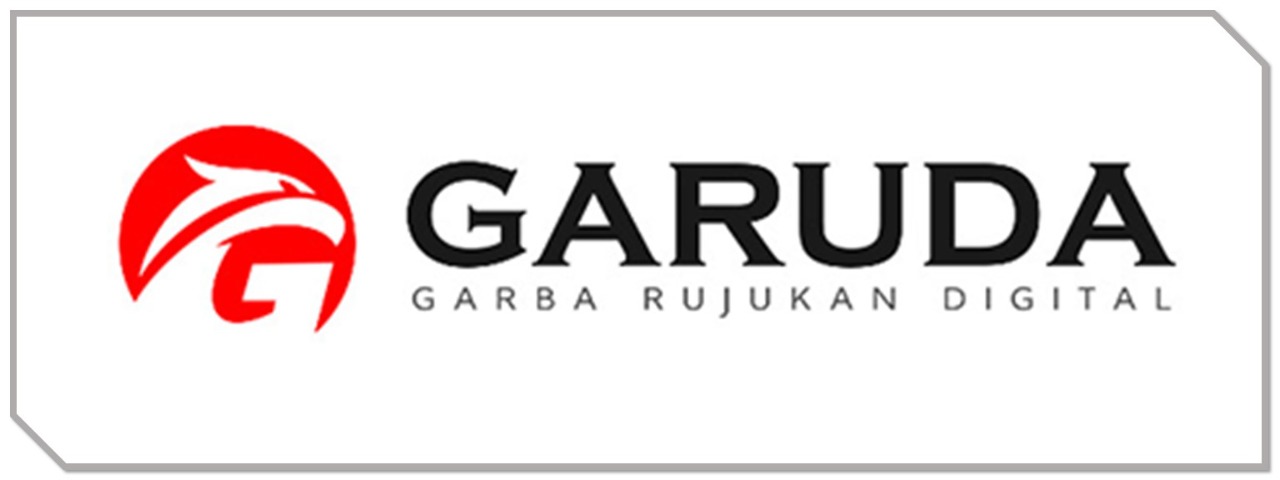Beyond Engagement: How Social Media Marketing Drives Trust, Image, and Purchase Intention in Cosmetic Brands
DOI:
https://doi.org/10.53748/jbms.v5i1.117Keywords:
social media marketing activities, brand trust, brand image, purchase intention, cosmetic industryAbstract
The rapid growth of internet usage significantly impacts customers’ habits, reshaping their behaviors in various ways. Correspondingly, this evolution has also transformed social media from a communication platform to a marketing tool. Today, social media marketing plays a crucial role in cultivating brand trust and shaping brand image, significantly influencing consumers’ purchase intentions. By using the theory of planned behavior, this study aims to explore the influence of social media marketing activities on purchase intentions, focusing on cosmetic brands in DKI Jakarta. This research used a quantitative approach, focuses on a sample of 177 residents of Jakarta. It aims to analyze the direct and indirect effects of social media marketing activities, brand trust, and brand image on purchase intention. The study utilizes the Smart-PLS software to evaluate the proposed hypotheses. The findings of this study reveal a notable and positive correlation between social media marketing activities, brand trust, brand image, and purchase intention. By investigating the impact of these variables on purchase intention, this research adds to the existing body of knowledge. The outcomes provide valuable insights for skincare brand management, enabling them to devise effective marketing strategies to succeed in a highly competitive market. The study suggests that managers should maximize the potential of social media marketing activities to enhance brand trust and cultivate a positive brand image, thereby promoting a favorable impact on purchase intention.
Downloads
References
Ajzen, I. (1991). The Theory of Planned Behavior. Organizational Behavior and Human Decision Processes 50 (2), 179–211.
Alhaddad, A. (2015). Perceived quality, brand image and brand trust as determinants of brand loyalty. Journal of Research in Business and Management, 3(4), 01-08.
Alif Fianto, A. Y., Hadiwidjojo, D., Aisjah, S., & Solimun, S. (2014). The influence of brand image on purchase behaviour through Brand Trust. Business Management and Strategy, 5(2), 58. https://doi.org/10.5296/bms.v5i2.6003
AYDIN, G., AR, A. A., & TAŞKIN, Ç. (2014). The role of Brand Trust on parents purchase intentions of baby-care products. Doğuş Üniversitesi Dergisi, 2(15), 165–180.
Badan Pusat Statistik. (2022, July 18). Persentase Penduduk Berumur 5 Tahun ke Atas yang Mengakses Internet dalam 3 Bulan Terakhir menurut Kabupaten/Kota dan Tujuan Mengakses Internet, 2021. BPS provinsi DKI Jakarta. https://jakarta.bps.go.id/statictable/2022/07/18/380/persentase-penduduk-berumur-5-tahun-ke-atas-yang-mengakses-internet-dalam-3-bulan-terakhir-menurut-kabupaten-kota-dan-tujuan-mengakses-internet-2021.html
BİLGİN, Y. (2018). The effect of social media marketing activities on brand awareness, Brand Image, and brand loyalty. Business & Management Studies: An International Journal, 6(1), 128–148. https://doi.org/10.15295/bmij.v6i1.229
Daniëlle N. M. Bleize & Marjolijn L. Antheunis (2019) Factors influencing purchase intent in virtual worlds: a review of the literature, Journal of Marketing Communications, 25:4, 403-420, https://doi.org/10.1080/13527266.2016.1278028
Ceyhan, A. (2019). The impact of perception related social media marketing applications on consumers’ brand loyalty and purchase intention. EMAJ: Emerging Markets Journal, 9(1), 88–100. https://doi.org/10.5195/emaj.2019.173
DAM, T. C. (2020). Influence of Brand Trust, perceived value on brand preference and purchase intention. The Journal of Asian Finance, Economics and Business, 7(10), 939–947. https://doi.org/10.13106/jafeb.2020.vol7.no10.939
Davis, F. D. (1993). User acceptance of information technology: System characteristics, user perceptions, and behavioral impacts. International Journal of Man-Machine Studies, 38(3), 475–487. https://doi.org/10.1006/imms.1993.1022
Dolan, R., Conduit, J., Frethey-Bentham, C., Fahy, J., & Goodman, S. (2019). Social Media Engagement Behavior. European Journal of Marketing, 53(10), 2213–2243. https://doi.org/10.1108/ejm-03-2017-0182
Hair, J. F., Black, W. C., Babin, B. J., & Anderson, R. E. (2019). Multivariate Data Analysis (8th ed.). Cengage.
Hair, J. F., Jr, Hult, G. T. M., Ringle, C. M., Sarstedt, M., Danks, N. P., & Ray, S. (2021). Partial Least Squares Structural Equation Modeling (PLS-SEM) Using R: A Workbook. Springer Nature.
Harvina, L. G., Ellitan, L., & Lukito, R. S. H. (2022). The effect of social media marketing on Brand Image, Brand Trust, and purchase intention of Somethinc Skincare products in Surabaya. Journal of Entrepreneurship & Business, 3(2), 104–114. https://doi.org/10.24123/jeb.v3i2.4801
Huda, F. N., Thoyib, A., & Hadiwidjojo, D. (2022). Social Media Marketing’s effectiveness on purchase intention mediated by Brand Image and Trust. Interdisciplinary Social Studies, 2(1). https://doi.org/10.55324/iss.v2i1.309
Kabadayi, E. T., & Alan, A. (2012). Brand trust and brand affect: Their strategic importance on brand loyalty. Journal of Global Strategic Management, 11(6), 81-88.
Kaplan, A. M., & Haenlein, M. (2010). Users of the world, unite! The challenges and opportunities of social media. Business Horizons, 53(1), 59–68. https://doi.org/10.1016/j.bushor.2009.09.003
Khan, I. (2022). Do brands’ Social Media Marketing Activities matter? A moderation analysis. Journal of Retailing and Consumer Services, p. 64, 102794. https://doi.org/10.1016/j.jretconser.2021.102794
Kim, Angella J., & Ko, E. (2012). Do social media marketing activities enhance customer equity? an empirical study of luxury fashion brand. Journal of Business Research, 65(10), 1480–1486. https://doi.org/10.1016/j.jbusres.2011.10.014
Kim, Angella Jiyoung, & Ko, E. (2010). Impacts of luxury fashion brand’s social media marketing on customer Relationship and purchase intention. Journal of Global Fashion Marketing, 1(3), 164–171. https://doi.org/10.1080/20932685.2010.10593068
Kırcova, İ., Yaman, Y., & Köse, Ş. G. (2018). Instagram, Facebook or Twitter: Which engages best? A Comparative Study of Consumer Brand Engagement and Social Commerce Purchase intention. European Journal of Economics and Business Studies, 10(1), 279. https://doi.org/10.26417/ejes.v10i1.p279-289
Lau, G. T., & Lee, S. H. (1999). Journal of Market-Focused Management, 4(4), 341–370. https://doi.org/10.1023/a:1009886520142
Majid, U. (2018). Research fundamentals: Study design, population, and sample size. Undergraduate Research in Natural and Clinical Science and Technology (URNCST) Journal, 2(1), 1–7. https://doi.org/10.26685/urncst.16
Marliawati, A., & Cahyaningdyah, D. (2020). Impacts the brand of experience and brand image on Brand Loyalty: Mediators brand of trust. Management Analysis Journal, 9(2), 140–151. https://doi.org/10.15294/maj.v9i2.36945
Memon, M. A., Ting, H., Cheah, J.-H., Thurasamy, R., Chuah, F., & Cham, T. H. (2020). Sample Size For Survey Research: Review and recommendations. Journal of Applied Structural Equation Modeling, 4(2), i–xx. https://doi.org/10.47263/jasem.4(2)01
Moslehpour, M., Ismail, T., Purba, B. I., & Lin, P.-K. C. (2020). The effects of social media marketing, trust, and brand image on consumers’ purchase intention of Go-Jek in Indonesia. Proceedings of the 2020 The 6th International Conference on E-Business and Applications. https://doi.org/10.1145/3387263.3387282
Nurrohmah, S., Zaini, O. K., Yudha, A. P., & Purbasari, D. M. (2021). ANALISIS PERBANDINGAN CITRA MEREK PRODUK KOSMETIK DALAM NEGERI DAN LUAR NEGERI (Studi Kasus Pada Mahasiswi Perguruan Tinggi Di Kota Bogor). Jurnal Online Mahasiswa (JOM) Bidang Manajemen, 6(4).
Perneger, T. V., Courvoisier, D. S., Hudelson, P. M., & Gayet-Ageron, A. (2014). Sample size for pre-tests of questionnaires. Quality of Life Research, 24(1), 147–151. https://doi.org/10.1007/s11136-014-0752-2
Putri, A. M. P., & Anggarawati, S. (2022). THE ROLE OF BRAND TRUST AS A MEDIATOR IN THE RELATIONSHIP BETWEEN SOCIAL MEDIA MARKETING AND PURCHASE INTENTIONS. Managament Insight: Jurnal Ilmiah Manajemen, 17(2).
Razy, F. F., & Lajevardi, M. (2015). Investigating relationship between brand image, price discount and purchase intention. Journal of Marketing and Consumer Research, 17, 49-56.
Reza Jalilvand, M., & Samiei, N. (2012). The effect of electronic word of mouth on brand image and purchase intention. Marketing Intelligence & Planning, 30(4), 460–476. https://doi.org/10.1108/02634501211231946
Salhab, H. A., Al-Amarneh, A., Aljabaly, S. M., Zoubi, M. M., & Othman, M. D. (2023). The impact of social media marketing on purchase intention: The mediating role of brand trust and image. International Journal of Data and Network Science, 7(2), 591–600. https://doi.org/10.5267/j.ijdns.2023.3.012
Sanny, L., Arina, A. N., Maulidya, R. T., & Pertiwi, R. P. (2020). Purchase intention on Indonesia male’s skin care by social media marketing effect towards Brand Image and brand trust. Management Science Letters, 2139–2146. https://doi.org/10.5267/j.msl.2020.3.023
Savitri, C., Hurriyati, R., Wibowo, L. A., & Hendrayati, H. (2022). The role of social media marketing and brand image on smartphone purchase intention. International Journal of Data and Network Science, 6(1), 185–192. https://doi.org/10.5267/j.ijdns.2021.9.009
Seo, E.-J., & Park, J.-W. (2018). A study on the effects of social media marketing activities on Brand Equity and customer response in the airline industry. Journal of Air Transport Management, 66, 36–41. https://doi.org/10.1016/j.jairtraman.2017.09.014
Tatar, Ş. B., & Eren-Erdoğmuş, İ. (2016). The effect of social media marketing on Brand Trust and brand loyalty for Hotels. Information Technology & Tourism, 16(3), 249–263. https://doi.org/10.1007/s40558-015-0048-6
Thacker, L. R. (2019). What is the big deal about populations in research? Progress in Transplantation, 30(1), 3–3. https://doi.org/10.1177/1526924819893795
Vukasovic, T. (2013). Building successful brand by using social networking media. Journal of Media and Communication Studies, 5(6), 56.
Waworuntu, E. C., Mandagi, D. W., & Pangemanan, A. S. (2022). ‘I see it, I want it, I buy it’: The role of social media marketing in shaping brand image and gen Z’s intention to purchase local product. Society, 10(2), 351–369. https://doi.org/10.33019/society.v10i2.46
Willits, F. K., Theodori, G. L., & Luloff, A. E. (2016). Another look at Likert scales. Journal of Rural Social Sciences, 31(3), 6.
Woo, H. (2019). The expanded halo model of brand image, country image and product image in the context of three Asian countries. Asia Pacific Journal of Marketing and Logistics, 31(4), 773–790. https://doi.org/10.1108/apjml-05-2018-0173
Yadav, M., & Rahman, Z. (2017). Measuring consumer perception of social media marketing activities in e-commerce industry: Scale Development & Validation. Telematics and Informatics, 34(7), 1294–1307. https://doi.org/10.1016/j.tele.2017.06.001
Downloads
Published
How to Cite
Issue
Section
License
Copyright (c) 2025 Journal of Business, Management, and Social Studies

This work is licensed under a Creative Commons Attribution 4.0 International License.
Authors retain copyright and grant the journal right of first publication with the work simultaneously licensed under a Creative Commons Attribution 4.0 (CC 4.0) that allows others to share the work with an acknowledgment of the work's authorship and initial publication in this journal.


















